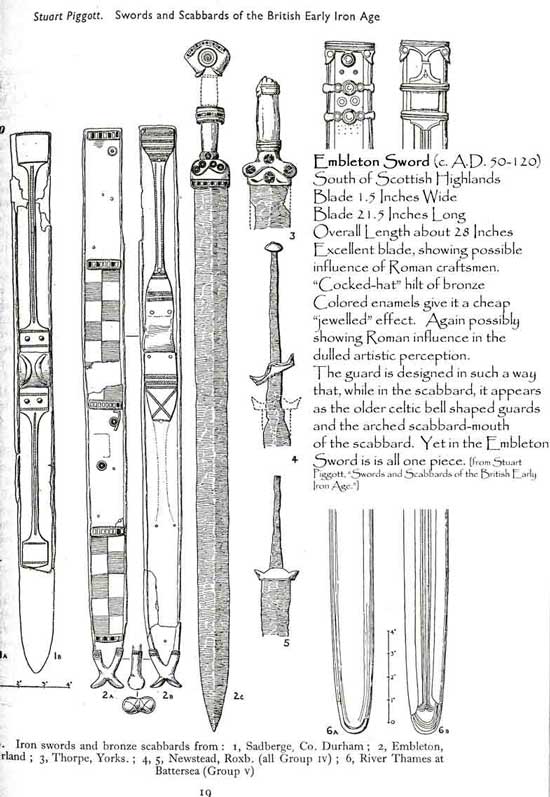would this replica (the longer one) be considered an accurate one, and of so from what time period do you think?
[ Linked Image ]
also would this be exclusively a cutting weapon, or would the thrust also have been effective? to a layman (me) it looks like you could skewer a boar on it.
maybe not a mailclad one, though, with a shield.
Intresstingly I have found in practise that thrusts are often the winning attacs when fighting with shields. I can elaborate on this for hours but to make it short it has to do with confusing the distance for the opponent with the shield and then do a quick thrust above the rim of the opponents shield straight to his/her eyes.
| Martin Wallgren wrote: |
| Intresstingly I have found in practise that thrusts are often the winning attacs when fighting with shields. |
would they be in this case? would that strategy prove efficatious with this sword or, rather, a sword of this type?
| Victor Crowne wrote: | ||
would they be in this case? would that strategy prove efficatious with this sword or, rather, a sword of this type? |
yepp!
For some context, it's the "Celtic Long Sword" by Windlass Steelcrafts. In their own words:
| Quote: |
| The Celts are a far ranging people who designed some of the most beautiful objects of art known. Among the first people to use long iron swords, the Celts are also believed to be the inventors of mail. We have reproduced a long sword that is believed to be the forerunner of the spatha and the Roman cavalry sword. Hand forged from high carbon steel, red bronze guard and pommel on either side of the leather covered wood grip. A fearsome sword that smote the enemies of the Celts across the entire continent of Europe. Made by Windlass Steelcrafts®. Comes with scabbard.
Overall-37¼" • Blade-31" long, 1½" wide • Wt. 2 lbs. |
| Victor Crowne wrote: |
| would this replica (the longer one) be considered an accurate one, and of so from what time period do you think?
[ Linked Image ] also would this be exclusively a cutting weapon, or would the thrust also have been effective? to a layman (me) it looks like you could skewer a boar on it. maybe not a mailclad one, though, with a shield. |
Hi Victor...
It may be a replica of the Embleton Sword... Celto-Roman roughly A.D. 100.
Like you said, it would primarily be a cutting weapon I would think, but could also be a good thruster... The MRL replica is about 10 inches longer in the blade than the Embleton... that may be the reason it looks like a skewer.
ks

From "Swords and Scabbards of the British Early Iron Age" by Stuart Piggot
Somehow, the Embleton original looks like it's going to be the better thruster than the replica, despite its less skewer-like appearance...
| Lafayette C Curtis wrote: |
| Somehow, the Embleton original looks like it's going to be the better thruster than the replica, despite its less skewer-like appearance... |
It does look like the tip would be closer to the pivot point than on the replica's extended blade, for one. On the other hand, the replica looks like it should be a stronger cutter, with more blade presence...
Page 1 of 1
You cannot post new topics in this forumYou cannot reply to topics in this forum
You cannot edit your posts in this forum
You cannot delete your posts in this forum
You cannot vote in polls in this forum
You cannot attach files in this forum
You can download files in this forum
All contents © Copyright 2003-2006 myArmoury.com — All rights reserved
Discussion forums powered by phpBB © The phpBB Group
Switch to the Full-featured Version of the forum
Discussion forums powered by phpBB © The phpBB Group
Switch to the Full-featured Version of the forum